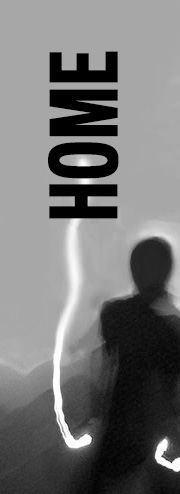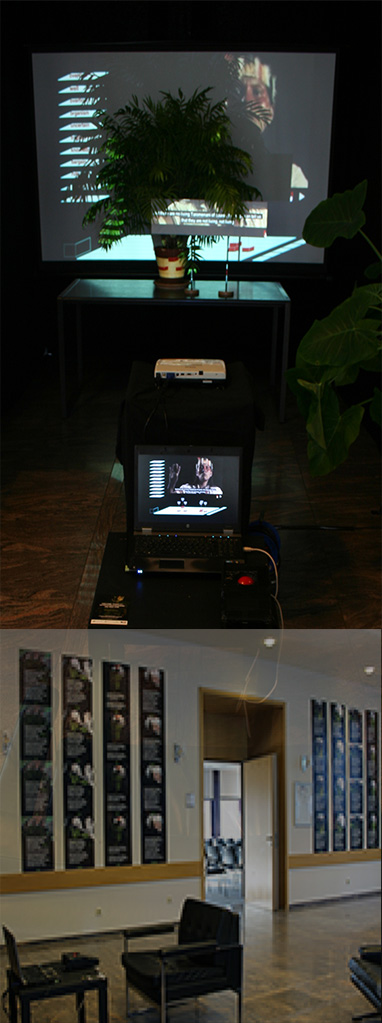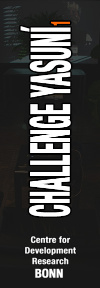


















Material: Kentia palm tree, desks, labtop computer, interactive interface, beamer, canvas, chair, flyposters
Dimension: variable
"Challenge YASUNÍ-ITT" is a traveling exhibition that so far has been presented in the framework of five conferences on research topics for sustainability at universities, research centers and civil associations committed to a more sustainable world. The name derives from the Ecuadorian Yasuní Ishpingo Tambococha Tiputini (Yasuní-ITT) initiative, which called on the international community to prevent the expansion of oil fields in Yasuní National Park. “Challenge Yasuní” is also used as an emblematic case for a broader discussion about global challenges that result from complex interactions between anthropogenic environmental changes.
The participative art intervention is conceptualized around the context of scientific conferences. Although scientific conferences are usually understood as spaces for meeting and exchanging different forms of knowledge and disciplinary expertise, they often do not seek to integrate other forms of knowledge such as local or indigenous knowledge into science. Thus these Conference Art Intervention aim to face the challenge of redesigning the shared space of conferences as a place of integration of different forms of knowledge and as a meeting place for diversity and complementarity. Therefore it uses an interactive interface to slowly introduce people to different views on the global challenges of the Anthropocene, including extractivism, energy policies, democracy, degrowth, and ownership.
“Like a market we have the forest where we collect fruit, hunt animals [such] as fish—freely—where we are eating and living, without dollars,” says Alicia Cahuia. Cahuia is a Woarani expert who was born and lives in the Amazonian forest, and who questions the decisions made in the city on behalf of the inhabitants of the forest.
The participative exhibition is a collaboration between Stella Veciana and Dan Norton. When it was first presented at the Center for Development Research in Bonn, it showed an interactive video-interface projected onto a kentia palm tree and a series of flyposters with quotes from interviewed experts of the so-called “global North” and “global South.” The interactive interface contains a growing archive of video interviews that connect specialist knowledge from a continuous series of transdisciplinary conferences. The key questions of the interviews address themes such as present resource policies, their impact on environmental and human rights, and possible ecologically friendly and good-governance alternatives to extractive and neo-extractive development models.
Other interviews discuss topics relating to sustainability research and Buen Vivir. The interactive software allows extended video interviews to be analyzed and classified by theme and topic, and then these topics are categorized using key words in a drop-down menu, making each interview sequence directly accessible. This allows all interview comments that have been made regarding, for example, the key words Buen Vivir to be easily found, selected, and discussed on the site. Similar themes and references from specialists of the North and South can be compared, contrasted, and synthesized. Knowledge locked within long video sequences and narratives can be identified, selected, and mixed. The user’s own line of inquiry directs the narrative between the key words, and allows the interviews to respond to the viewer’s own interests. Correspondingly, the viewer’s own sequence of choices determines the slowness or speed of their line of inquiry.
“Challenge Yasuní” offers the audience a way to compare interviewees’ views and bring (inevitably) defended expert opinions into play within an undefended space. The simple creative acts of selecting and mixing, when facilitated in a video interface for sharing knowledge, balance the user’s role between reader and writer; between learning new knowledge and creating their own knowledge.
Exhibited at:
1. "Challenge YASUNÍ-ITT: Development Research and Buen Vivir" was shown at the conference "Transdisciplinary Sustainability Research - New Partners for Development Work" on February 25, 2014. Bonn University, Centre for Development Research, Bonn.
2. "Challenge YASUNÍ-ITT: Think Tank", took place in the context of the event "Buen Vivir. The Right to a Good Life" on April 28, 2014. Bread for the World (BfdW), Berlin.
3. "Challenge YASUNÍ-ITT: The Future of Democracy" was part of the international conference "Resource Exploitation and the Future of Democracy in Latin America" on May 13 and 14, 2014. Heinrich Böll Foundation, Berlin.
4. "Challenge YASUNÍ-ITT: Degrowth" was presented during the "Fourth International Degrowth Conference for Ecological Sustainability and Social Equity" from September 2nd to 6th, 2014. Leipzig University, Leipzig.
5. "Challenge YASUNÍ-ITT: Who owns the raw materials" was exhibited from November 2nd to 16th, 2014 in the frame of the "Entwicklungspolitische Tage in Mecklenburg-Vorpommern", Grünes Büro, Stralsund.
Fotos: Dan Norton, Stella Veciana
Flyposters Design: Stella Veciana
Related work:

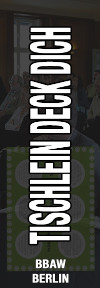
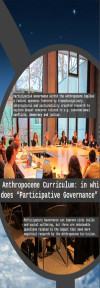

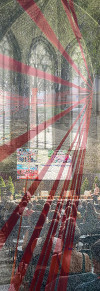
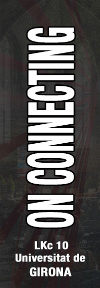
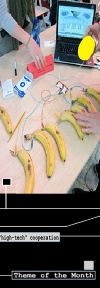
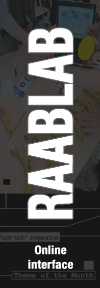
Mida: variable
"Challenge YASUNÍ-ITT" és una exposició itinerant que fins ara s'ha presentat en el marc de cinc conferències sobre temes de recerca per a la sostenibilitat a universitats, centres de recerca i associacions civils compromeses amb un món més sostenible. El nom deriva de la iniciativa equatoriana Yasuní Ishpingo Tambococha Tiputini (Yasuní-ITT), que va demanar a la comunitat internacional que impedeixi l'expansió dels jaciments de petroli al Parc Nacional de Yasuní. El projecte també fa referència a "Challenge Yasuní" com a cas emblemàtic que permet una discussió més amplia sobre els reptes globals que resulten d'interaccions complexes entre els canvis ambientals antropogènics.
La intervenció artística participativa es conceptualitza en el context de jornades científiques. Encara que les conferències científiques s'entenen habitualment com a espais de trobada i intercanvi de diferents formes de coneixement més aviat disciplinaris, sovint no estan oberts a integrar altres formes de coneixement com el coneixement local o autòcton a la ciència. Així, aquestes Jornades d'Intervenció Artística pretenen afrontar el repte de redissenyar l'espai compartit de conferències com a espai d'integració de diferents formes de coneixement i com a lloc de trobada de la diversitat i la complementarietat. Per això, utilitza una interfície interactiva que introdueix lentament als assistents a diferents punts de vista sobre els reptes globals de l'Antropocè, com ara l’extractivisme, les polítiques energètiques, la democràcia, el decreixement i la propietat privada.
“Com un mercat tenim el bosc on recollim fruita, cacem animals [com ara] peixos, lliurement, on mengem i vivim, sense dòlars”, diu Alicia Cahuia. Cahuia que és un expert woarani que va néixer i viu a la selva amazònica, i que qüestiona les decisions preses a la ciutat en nom dels habitants de la selva.
L'exposició és una col·laboració entre Stella Veciana i Dan Norton. Quan es va presentar per primera vegada al Centre de Recerca per al Desenvolupament de Bonn, va mostrar una interfície de vídeo interactiva projectada sobre una palmera kentia i una sèrie de cartells amb cites d'experts entrevistats de l'anomenat "Nord global" i "Sud global". La interfície interactiva conté un arxiu creixent d'entrevistes en vídeo que connecten coneixements especialitzats d'una sèrie contínua de conferències transdisciplinàries. Les preguntes clau de les entrevistes tracten temes com ara les polítiques de recursos actuals, el seu impacte en els drets ambientals i humans, i possibles alternatives ecològiques i de bon govern als models de desenvolupament extractiu i neoextractiu.
Altres entrevistes discuteixen temes relacionats amb la recerca en sostenibilitat i el Buen Vivir. El programari interactiu permet analitzar i classificar les entrevistes de vídeo categoritzades per temes i paraules clau en un menú desplegable, fent que cada seqüència d'entrevistes sigui directament accessible. Això permet trobar, seleccionar i discutir fàcilment tots els comentaris que s'han fet a totes les entrevistes sobre, per exemple, la paraula clau Buen Vivir. Es poden comparar, contrastar i sintetitzar temes similars i referències d'experts del Nord i del Sud Global. El coneixement tancat en llargues seqüències i narracions de vídeo es pot identificar, seleccionar i barrejar. La pròpia línia d'investigació de l'usuari dirigeix la narració entre les paraules clau i permet que les entrevistes responguin a les seves preguntes i els seus interessos. En conseqüència, la seqüència d'opcions pròpia de l'espectador determina la lentitud o la velocitat de la seva línia d'investigació.
"Challenge Yasuní" ofereix a l'audiència una manera de comparar les informacions i opinions donades pels entrevistats i posar en joc opinions d'experts (inevitablement) defensades dins d'un espai no defensat. Els actes creatius senzills de seleccionar i barrejar, quan es faciliten en una interfície de vídeo per compartir coneixement, equilibren el paper de l'usuari entre el del lector i l'escriptor; entre aprendre nous coneixements i crear el seu propi coneixement.
Exposat a:
1. "Challenge YASUNÍ-ITT: Recerca del Desenvolupament i Buen Vivir" es va inaugurar per primer cop a la conferència "Transdisciplinary Sustainability Research - New Partners for Development Work", Universitat de Bonn, Centre de Recerca pel Desenvolupament, Bonn.
2. "Challenge YASUNÍ-ITT: Think Tank", va tindre lloc en el context de l'event "Buen Vivir. The Right to a Good Life" on April 28, 2014. Bread for the World (Pa pel món), Berlin.
3. "Challenge YASUNÍ-ITT: El futur de la democràcia" va ser part de la conferència international "Resource Exploitation and the Future of Democracy in Latin America" del 13 al 14 de maig 2014. Fundació Heinrich Böll, Berlin.
4. "Challenge YASUNÍ-ITT: Degrowth" es va presentar a la "Fourth International Degrowth Conference for Ecological Sustainability and Social Equity" del 2 al 6 de septembre 2014. Universitat de Leipzig, Leipzig.
5. "Challenge YASUNÍ-ITT: Qui és propietari de les matèries primeres?" es va exposar del 2 al 16 de novembre 2014 en el marc de "Jornades sobre la política de desenvolupament a Mecklenburg-Vorpommern", Grünes Büro, Stralsund.
Fotos: Dan Norton, Stella Veciana
Disseny de Flyposters: Stella Veciana
Obra relacionada:








